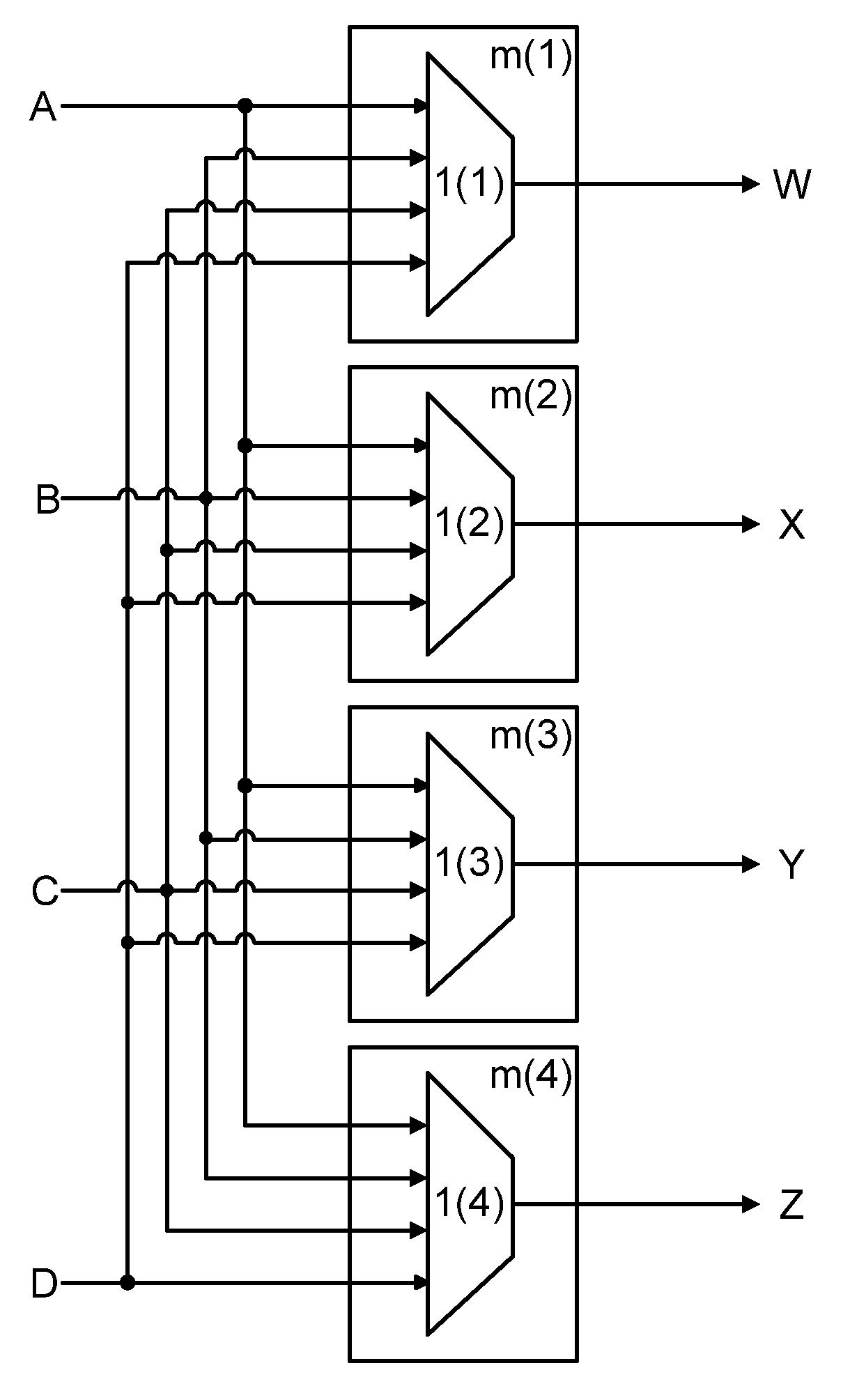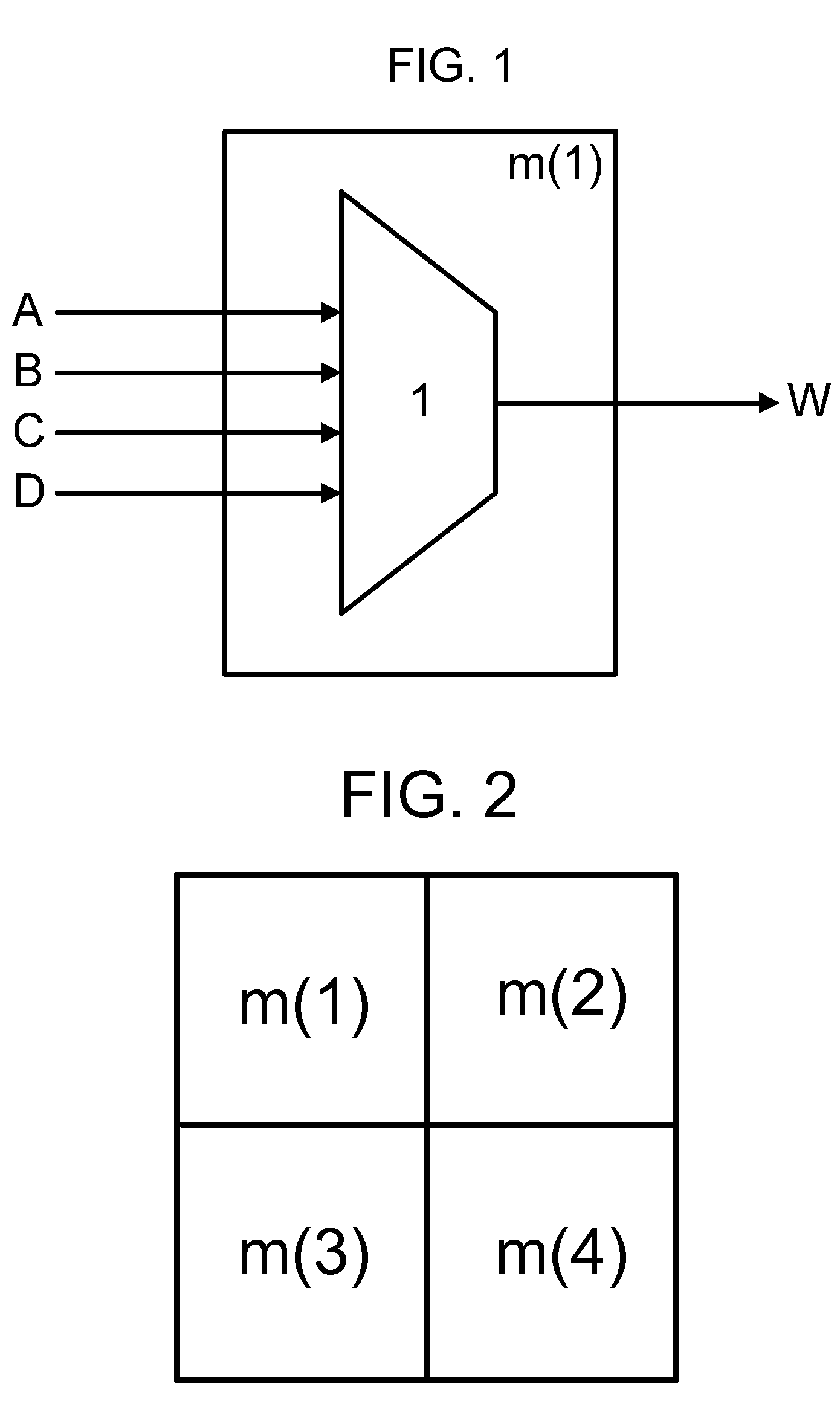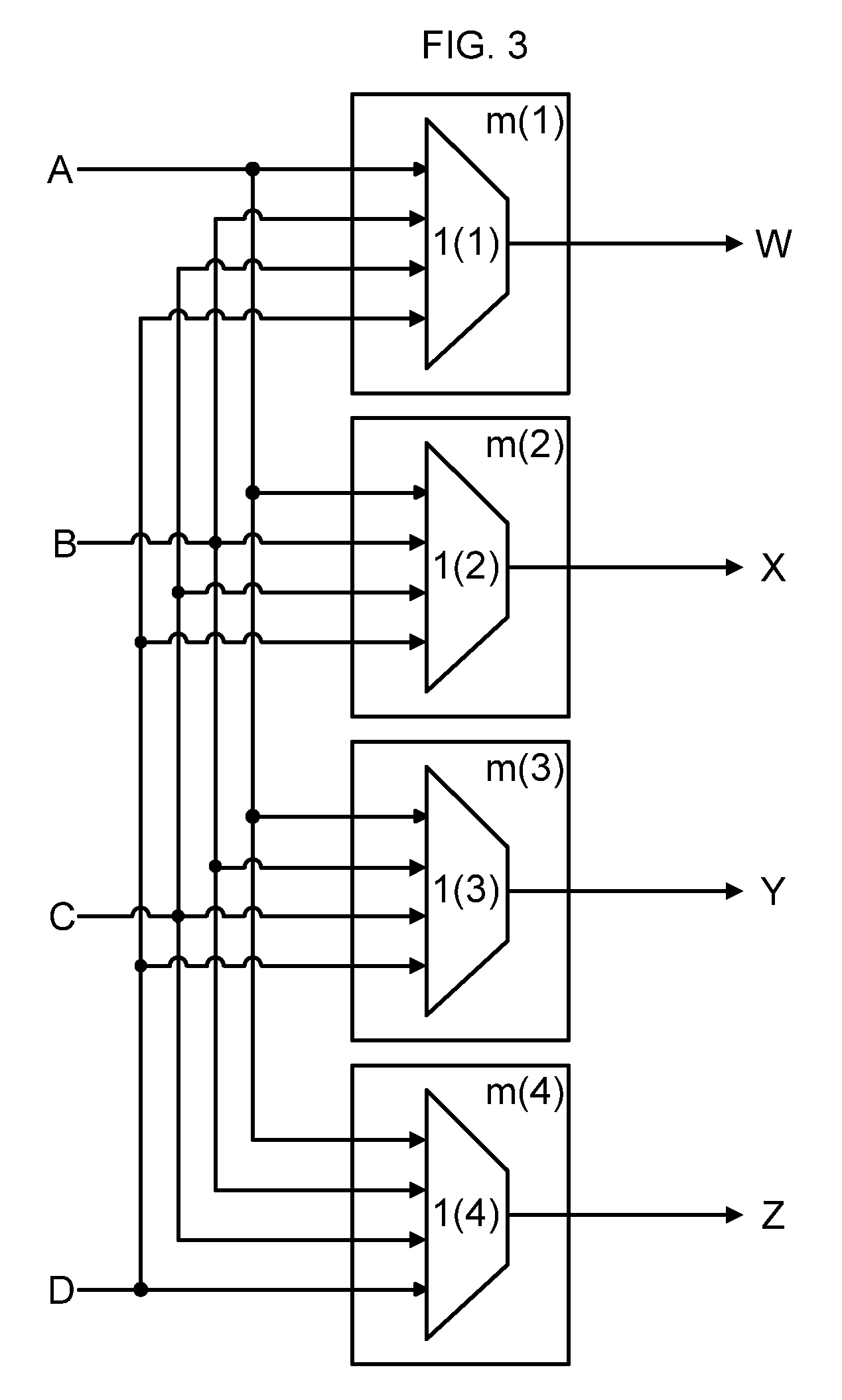Strict-sense minimal spanning switch non-blocking architecture
a minimal spanning switch and non-blocking technology, applied in data switching networks, multiplex communication, digital transmission, etc., can solve problems such as undesirable re-routing of signals, dropped telephone connections, and interrupted or blocked connections, so as to minimize the amount of logic duplicated on each data stream, the effect of maximizing efficiency
- Summary
- Abstract
- Description
- Claims
- Application Information
AI Technical Summary
Benefits of technology
Problems solved by technology
Method used
Image
Examples
Embodiment Construction
[0020]An illustrative embodiment of the invention employs a n framer system as applied to a 4×4 switch. The crossbar connections employed may be Field Programmable Gate Arrays (FPGAs) or any other logic circuitry element. It should be noted that this example is provided for illustrative purposes only and is not meant to limit the scope of the invention, as any size switch can be accommodated. In the 4×4 switch, each of the crossbar connections m has four separate data input locations and one single data output location. This is illustrated in FIG. 1, where four data input signals A, B, C and D enter a single crossbar connection m(1), where multiplexer (1) selects one of data input signals A, B, C and D and subsequently outputs the signal from the system through the single data output location; this is illustrated as data output signal W. As illustrated in FIG. 2, the 4×4 switch is composed of four crossbar connections, m(1), m(2), m(3) and m(4). The input of the four data input sign...
PUM
 Login to View More
Login to View More Abstract
Description
Claims
Application Information
 Login to View More
Login to View More - R&D
- Intellectual Property
- Life Sciences
- Materials
- Tech Scout
- Unparalleled Data Quality
- Higher Quality Content
- 60% Fewer Hallucinations
Browse by: Latest US Patents, China's latest patents, Technical Efficacy Thesaurus, Application Domain, Technology Topic, Popular Technical Reports.
© 2025 PatSnap. All rights reserved.Legal|Privacy policy|Modern Slavery Act Transparency Statement|Sitemap|About US| Contact US: help@patsnap.com



